Regenerative vs traditional agriculture: farmers’ challenge in the food chain reaction
Out in the bush, property owners are rotating crops, using less artificial fertilisers and closely managing grazing. But the rejection of industrialised agriculture presents many challenges.
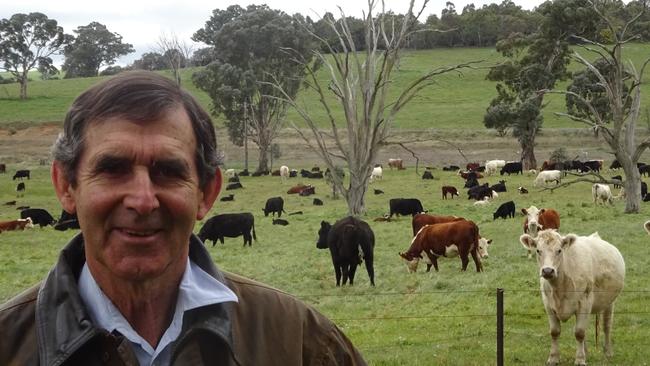
Charles Massy has probably done more than any other Australian to raise mainstream awareness of the need to renovate agriculture, thanks to his bestselling 2017 book, The Call of the Reed Warbler.
The fifth-generation grazier from Cooma, with a PhD from the Australian National University, is farming royalty, the perfect poster boy for regenerative agriculture, holistic farming, organic farming, rewilding and a stack of other alternatives to traditional agriculture.
Massy was not the first farmer in Australia to experiment with new methods to improve soil and droughtproof farms – some of our biggest producers have been changing their ways for 30 years – but his book analysed a range of radical practices and excited many people in a decade focused on food security, climate change and protection of the continent.
Coverage of the issues has increased dramatically. Who would argue with Massy’s statement to a podcaster a couple of years ago that there should have been a sign telling early settlers to “beware, this land is incredibly fragile and difficult”? Instead those who arrived after 1788 were “imbued with the European post-Enlightenment belief that they should dominate nature”. It was an attitude that led to clearing and grazing practices that caused grave ecological damage to some parts of Australia, even as they made the nation rich.
Massy’s book, originally his doctoral thesis, is subtitled, A New Agriculture, A New Earth. It offers case studies on his own property and that of other “revolutionaries” such as Zimbabwean Allan Savory and Australian Peter Andrews, some of whose ideas have gained traction even with people who identify as conventional farmers.
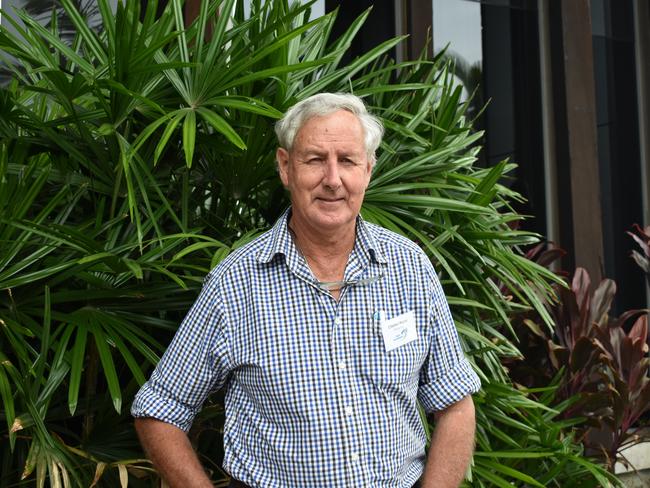
Out in the bush, many farmers are rotating crops, cutting back on artificial fertilisers and chemicals, closely managing grazing. They talk of soil health and carbon farming. They’ve stopped burning the stubble; they’re reviving native grasses, with much change driven by the need to remain competitive and by improved technology.
But for farmers shaped by the industrial-level practices of the past couple of hundred years, the label regenerative or holistic can be a challenge to their identity as stewards of the land who are also running a business.
Many are stocking more lightly and adopting low-till farming. They have seen where “thrashing” the land leads, but with astronomical land prices they are keenly aware of their financial returns.
University of New England school of environmental and rural science associate professor Lisa Lobry de Bruyn says: “I don’t think regenerative agriculture is a fad but the labelling of anything is dangerous. Farmers don’t want to see themselves as bad farmers. The hard thing about someone like Charles Massy rejecting industrialised agriculture – for the guys who are doing it now, it’s a huge thing. The challenge to your identity is quite big.”
She says the danger of “privileging one way of farming over another is that it risks ostracising a group that actually wants the same outcome”.
Terms such as extractive agriculture don’t help. “It’s all extractive, agriculture is always extractive, even regenerative farmers are selling their product,” she says.
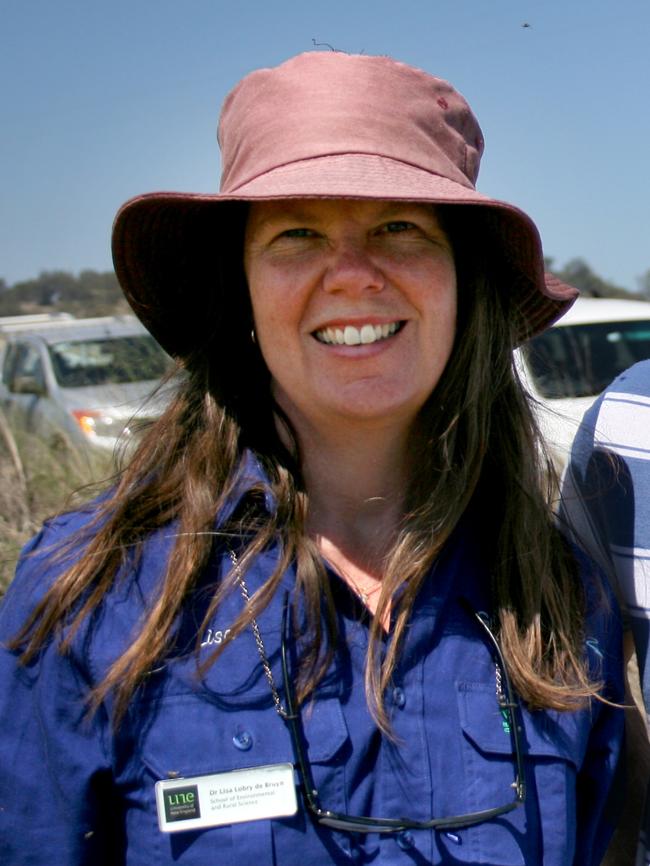
Rebecca Gorman, who practises holistic farming on her beef property near Gundagai, is equally frustrated by a debate too often framed as an “us and them” exercise.
The co-chairwoman of the Australian Holistic Management Co-operative says: “The question is not is there anything in this regenerative ag thing? The real question is what are the big issues we are facing in food production? What are the overlays with biodiversity loss, loss of community, loss of soil, climate change? What are the overlays with food security? What are the adjustments we can make that might lead to improvements in all these things?
“Pitching regen v trad ag creates a culture war, which is helpful to no one. What we need is a culture of openness and adaptability. There are farmers who are quietly delivering on excellent profitability, happy homes and burgeoning biodiversity and soil health.”
Holistic management was developed by the now 88-year-old Savory decades ago. It uses livestock – so often derided as the hoofed animals that have destroyed the continent – to reverse damage such as desertification and involves rotating stock quickly around smaller paddocks to avoid overgrazing.
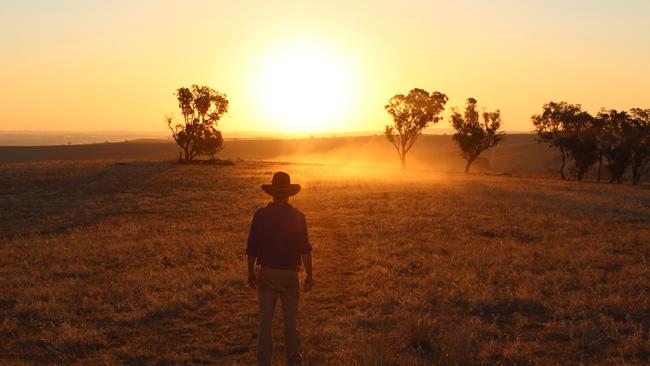
It’s a concept that runs alongside another big regenerative idea, natural sequence farming, taught by NSW farmer Andrews through his renowned Mulloon Institute. This aims to restore natural water cycles by slowing creeks to re-create flood plains, for example, and can involve using the traditional bad boys of the land – willows, blackberries and other weeds.
Charlie Arnott, an eighth-generation sheep and cattle farmer from Boorowa in NSW, says people such as Massy and Andrews are critically important because they “disturb the population into thinking outside the square”.
But he laments the dogmatists, including in his view some scientists, on all sides: “We just don’t have the time and the energy to get on our high horses – although there was probably a time when I was on the high horse because I thought this (regenerative agriculture) was a silver bullet.”
Across 20 years, Arnott, who remade himself as an educator and podcaster as well as a farmer, has become more realistic.
Today he talks about generative rather than regenerative agriculture, implying an enterprise that generates income, generates a better ecology and facilitates carbon capture. “It’s feels like a more accepting way because I don’t think there’s any conventional farmer who’s not trying to generate something,” he says.
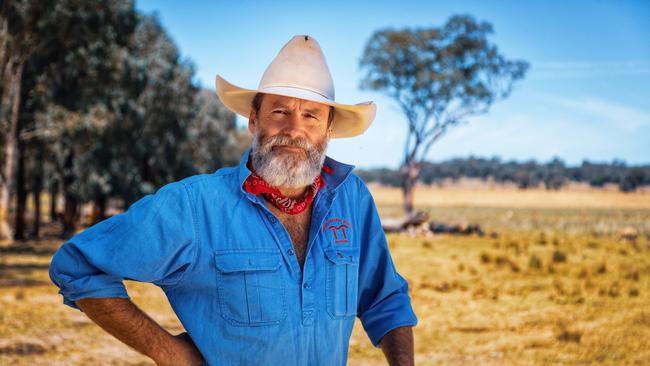
His was a typical farm, “lots of input, lots of output”, until he realised “I wasn’t really enjoying the farming any more, I wasn’t enjoying seeing my paddocks blowing away to New Zealand”.
He investigated the ideas of one of Australia’s most influential teachers and researchers in this field, Terry McCosker.
“I grabbed (his ideas) with open arms because it seemed to be the silver bullet,” Arnott recalls. “It was like, oh my god, why didn’t I notice earlier, this is what I need. I was quite dogmatic. I didn’t do a good job of a few things but, as I experienced things for myself, I stopped adopting and I started to adapt practices.”
Also farming at Boorowa is David Marsh, who adopted the Savory method in 1999 and reckons he has been more profitable in the past 25 years than if he had stuck with conventional farming. He thought about the change away from crops and chemicals for a decade before he had the confidence to switch methods on his 814ha mixed farm – a relatively small enterprise compared with many Australian grazing operations.
“We stop cropping immediately because one of the things we wanted to get away from, the amount of dry, bare ground that you create when you’re growing crops,” he says. “It’s not quite as bad today because of different methods, but cropping is absolutely tied to chemical farming. It’s a treadmill. If you’re growing crops, you’ve got to be using a lot of chemicals.”
Marsh transformed his grazing practice: “We were unplanned. We were moving animals around a bit but we were leaving them in one place for months at a time and that has a devastating effect on the complexity of the plants that you want.”
Perennial native grasses had been knocked out over 200 years of agriculture and survived on only about 1 per cent of his property. Across four years Marsh wired a stack of paddocks, increasing the number from 26 to 104, to allow his herd to be moved every few days, with paddocks left to recover for months. “That absolutely changed what’s happening in the landscape here,” he says.
“Now we’ve got native grasses in all paddocks. We stopped all inputs; we were throwing a lot of fertiliser about prior to that.”
As for setting stock levels – a core issue for graziers managing the booms and busts of drought and rain – he says: “I’m not interested in how many animals I can run year in, year out. I’m interested in matching the animals for the season. And we know how to do that now, we know how to measure how much grass we’ve got.
“We have never spent a cent feeding animals.”
It’s a personal and professional success story for the 74-year-old Marsh, but he knows it’s not useful to get too evangelical. All his “wonderful neighbours” remain conventional farmers.
“They’re all looking at what we’re doing but no one asks you what you’re doing, and I’m not going to their field days either,” he says. “So, we’re a bit tribal. But I haven’t felt isolated.”
ANU professor David Lindenmayer, one of the world’s leading biodiversity scientists who has done groundbreaking work on water quality and livestock productivity, declines to use the R-word.
“Our estimates are that about 10 per cent of farmers consider themselves regenerative agriculturalists,” he says. “Ninety per cent of farmers don’t consider themselves regenerative agriculturalists and they feel alienated by people who are very evangelical, who are kind of saying, ‘Well, if you’re not with us, you’re against us.’ ”
University of New England agricultural scientist Richard Flavel argues that about 80 per cent of regenerative ideas are already best management practice on farms.
“It’s things that we teach at universities across the country, that we have already implemented on large tracts of Australian country,” he says. “It depends on their land area, but I’d say most graziers are rotationally grazing, for example.
“Our producers are very sensitive to sustainability issues, they are very keen to improve the land better than it was in the first place; 99.9 per cent of growers I have worked with and come into contact with are very focused on sustainably reducing their environmental footprint.”
The challenge for a farmer is to find what works for their landscape – and much is contested in this battle of ideas.

Take the thistle which, whether regarded as weed or plant, has been seen as a pest for Australian farmers for generations but which some now argue can be left to its own devices because eventually it will be overtaken by competing native grasses. No more spraying, no more chipping.
Lindenmayer again: “I think we can assign that one to the rubbish bin, that’s bullshit on steroids. Thistles are dynamite if you’re a sheep farmer because when you get thistles in your wool clip it drastically reduces the value of the wool. The last thing that you want on your farm is a crop of thistles.”
Which doesn’t mean chemicals, says UNE’s Flavel: “Modern agriculture is about using pesticides when you have to, but not when you don’t; it’s a last resort. That’s one of the things we teach our students over and over again, that the chemical bottle is actually the thing that you lean on last because there’s a whole bunch of other practices we can put in place to make sure it doesn’t become a problem. There has been a shift over the last 50 years from hey, look, I’ve got a solution in a bottle to, no, there are other ways we can avoid using that.”
Then there’s the question of hoofed animals – a big issue given that about 85 per cent of agricultural land is given over to grazing.
Purists (including animal liberationists, vegetarians and net-zero advocates) might like to get rid of the lot of them from this fragile landscape but, surprisingly, regenerative farming sees cattle and sheep playing a central role in rescuing the environment.
Holistic farming, for example, argues they improve soil quality thanks to their manure and the movement of their hoofs.
Flavel chooses his words carefully on this one: “Under most conditions grazing by a cow is no more disruptive to soil than grazing by a kangaroo, and soil improvement could just be a result of normal rotational grazing where you put up fences and move animals around quickly in high-intensity herds and then allow a big spell in between.”
In other words, the impact of cattle, if correctly managed, is neutral. Lindenmayer says he has not seen evidence that cattle help regenerate soil: “What I have seen is that farmers who engage in short-term rotational grazing tend to have better grass cover, better livestock in better condition, and it tends to be a less stressful grazing enterprise.
“They don’t have to spend as much money hand feeding, they don’t have to do a fire sale of livestock in drought; their properties tend to be in better condition and that gives them more opportunity to do other restoration actions because they’re not making large payments for hand feeding as soon as it starts to get dry.”
Anyway, Lindenmayer is much more interested in other farm assets than in the soil health that dominates regenerative farming.
His work is about creating “productive and biodiverse farms” by amplifying natural assets – the farm dams, creeklines, vegetation and rocky outcrops so often undervalued in the balancing act between conservation of the biomass and agriculture.
His big thing in the past few years has been water: in 2019 his Sustainable Farms initiative at Fenner won a $5.93m federal grant to measure the benefits of farm dams to agriculture and the environment.
“Farm dams are important because not only do they feed livestock but they have what remains of natural wetlands,” Lindenmayer says. “About 90 per of Australia’s natural wetlands have been lost, and all that we’re left with are the wet bits on farms.
“If you manage farm dams in the right way, you can improve the quality of the water and improve livestock weight gain quite considerably. Australia has 1.765 million farm dams and the vast majority are in very, very poor condition. Essentially, they’ve got really poor-quality water and that means your livestock are drinking water in which they have peed or they have pooed or the excrement is washed off the paddock and into the dam. We’ve been able to show that if you renovate the dam in the right way your livestock put on weight much faster, which is a huge productivity gain.
“You can also get a biodiversity dividend – you get more farm birds, you get more frogs, including endangered frogs, and endangered fish. The other thing that happens is that you reduce greenhouse gas emissions from farms quite dramatically; farm dams go from being a carbon emission source to a carbon sink because they are storing carbon in the water profile.
“And because you have to protect the dam with plantings and trees it reduces evaporation, which means your water lasts for about 30 per cent longer. It’s part of drought resilience.”
The other big debate in the bush is about locking up land through carbon credits for farmers or buying back land for conservation. Advocated by conservationists for decades, buyback is an attractive idea for farmers keen to liquidate their assets and for philanthropists keen to save the planet. But it’s not without debate.
Gorman says: “The idea that we can simply lock up land and it will magically recover is naive. It is likely to be overrun with invasive species like lantana and blackberry. The process to desirable recovery is better with more eyes on the land – it’s got to have management.”
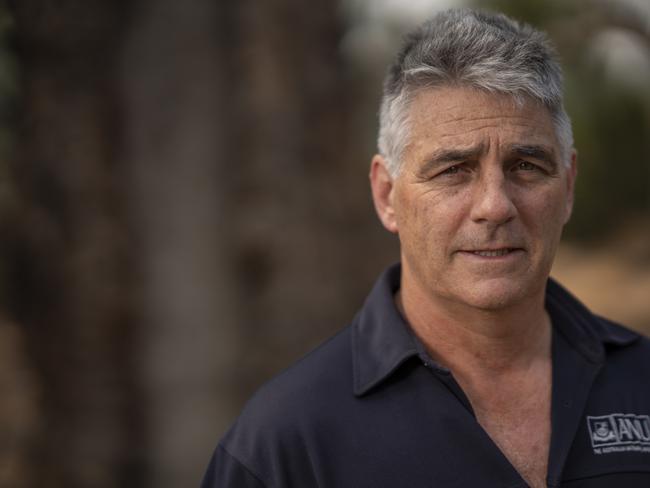
Lindenmayer says land is now so valuable that the future rests in “thinking deeply about how you integrate conservation and agriculture. The general rule of thumb is that for biodiversity gains on farms you need somewhere between 10 and 30 per cent as native vegetation. But it’s wrong to think of it as being locked up because in many cases that natural vegetation cover has other important roles to play in contributing to productivity.”
One example: shelter belts and patches of native vegetation can have positive effects on lambing; the survival rate of lambs is almost doubled because “they don’t freeze to death in the winter and they don’t boil to death in the summer”.
Flavel agrees there can be big benefits for farms running next door to conservation areas, but the danger is in “choosing the wrong sort of country, picking farms and locking them up without thought of what benefit they are going to bring to the community”.
“We need to be cautious about just rewilding large tracts of land indiscriminately,” Flavel says.
“But there are absolutely some key benefits in protecting certain parts of the country or ecological communities so that we keep that diversity and are strategic about conservation alongside agriculture.”
Arnott says every generation must heal a landscape “wounded” by European farming methods but we may be a long time waiting for locked-up land to heal itself: “We need management of animals in that landscape to create a positive result ecologically, we need active management of grazing and the use of pasture. We need to attend to that wound with the resources we have – cattle.”
A key lever in recent years has been the creation of Australian carbon credit units for farmers who stop farming. The scheme is controversial and Lindenmayer, for one, says it’s being gamed through lack of independent monitoring. He says ACCUs can make a difference in southeastern Australia, but many have been issued “deep in the range lands and they’re not credible carbon credits” because out there it’s “dependent on whether there is a drought period or a wet period and it’s got nothing to do with grazing management”.
Meanwhile farmers are under pressure to be more efficient than ever. Flavel says they’re not looking for silver bullets but stacking up incremental gains: “A couple of years ago I was running field days and the catchcry was: ‘It’s not just about finding a 10 per cent benefit, it’s about adding the 1 per cent gains together.’ So you do this, you do that, and when you get them all humming, then you get your 10 per cent.”
How much of those gains could come from people such as Marsh? The Boorowa farmer is respectful of “big industrial farmers, lots of them all over Australia who are very smart and really good at business. They’re fantastic at that sort of agriculture. If they decided they wanted to do what we’re doing, they’d run rings around us, they’re so clever.”
Conventional farming can be seductive, even when it involves the spreadsheets and change is slow. “There are some people who like the smell of diesel and jumping on the big shiny machine and tearing over 500ha a day,” Marsh says.
“Young people revel in the technology, now they’ve got satellite guidance (of machinery) and changing the amount of product you put on based on yield maps.
“It’s so attractive to people, but it’s not for the lack of that, that the land does well or not. It’s our relationship to it; it’s a philosophical shift of heart really.”


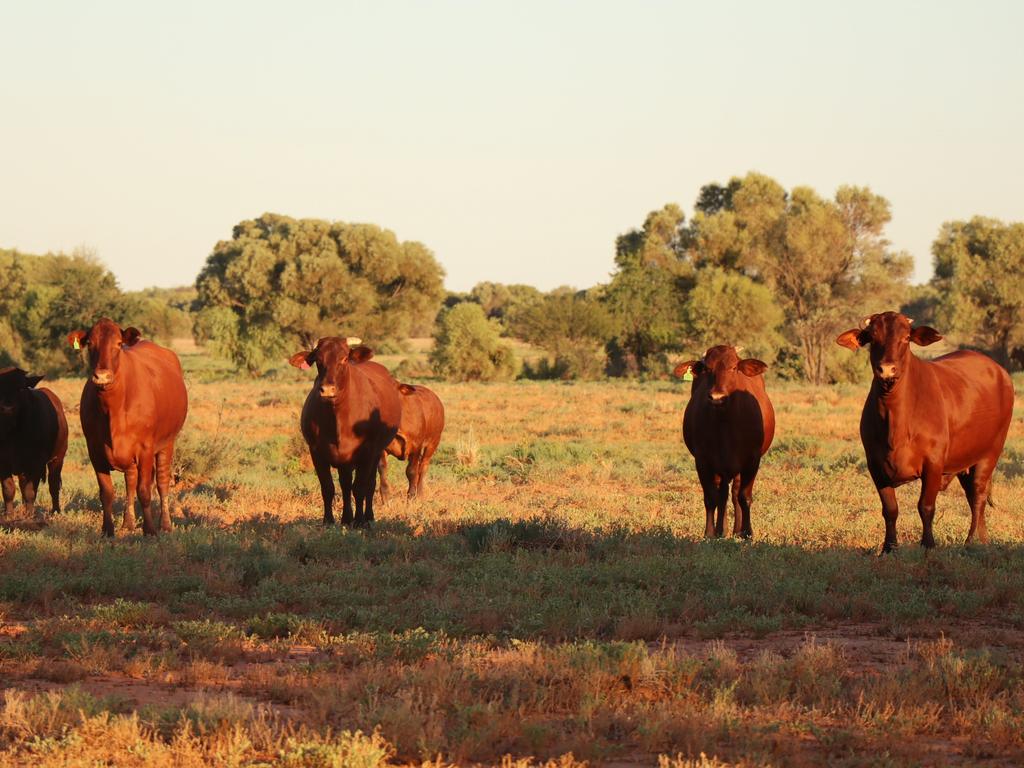





To join the conversation, please log in. Don't have an account? Register
Join the conversation, you are commenting as Logout